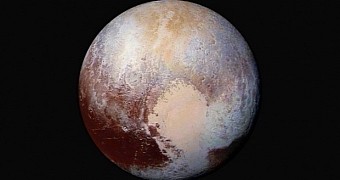Earlier this month, on July 14, NASA's New Horizons probe, launched in January 2006 from the Cape Canaveral Air Force Station in Florida, reached dwarf planet Pluto at the edge of our Solar System and flew by it before plunging deeper into the Kuiper Belt.
During its flyby of the Pluto system, the New Horizons spacecraft did not communicate with base. Instead, it positioned itself so that all its scientific instruments would be facing the dwarf planet.
“NASA will not be in contact with the spacecraft at closest approach since the spacecraft's instruments will be pointed at Pluto, an orientation that will take the spacecraft's fixed communications antenna off Earth point,” the US space agency explained in a statement.
So far, merely 5% of the data obtained by the space probe as it flew by Pluto and its moons has reached NASA scientists. Even so, this 5% has proven more than enough to change our view of the orb.
Pluto might hide an ocean under its surface
Thanks to New Horizons, we now know that Pluto is home to mountain peaks, frozen plains and even flowing nitrogen ice glaciers. If you have a couple of minutes to spare, check out the videos below to have a look at these alien landscapes.
Although there is plenty of data left to receive and sift through, researchers at NASA are beginning to make sense of this alien world. Their latest theory: based on data at hand, it's not all that far-fetched to assume that a liquid ocean might be lurking under Pluto's icy surface.
Even more so when the presence of its ocean in the dwarf planet's entrails would explain the geological processes New Horizons has so far revealed are happening on its surface. If it does exist, such an ocean would be nestled between Pluto's icy surface and a rocky core.
“All of the activity we see is consistent with the idea that [Pluto] has a massive rock core surrounded by an icy shell. It increases the probability that there may still be an ocean underneath the thick layer of ice,” explained scientist William McKinnon, as cited by MIT News.
True, New Horizons is yet to deliver concrete evidence of a hidden liquid ocean on Pluto. Still, as more data reaches them, NASA researchers hope to either confirm or rule out this possibility. Either way, at least they won't be guessing anymore.

 14 DAY TRIAL //
14 DAY TRIAL // 
